Abstract
Six hundred and eighty two assessments were performed on 641 babies under 6 months of age who presented to the emergency department of the Royal Children's Hospital, Melbourne, to try and determine the best markers of serious illness in young infants. Detailed, specific questions that quantified a baby's functional response to illness gave the most useful information. As a group, the six most common predictive symptoms of serious illness were: taking less than half the normal amount of feed over the preceding 24 hours, breathing difficulty, having less than four wet nappies in the preceding 24 hours, decreased activity, drowsiness, and a history of being both pale and hot. The presence of the corresponding sign on examination increased the predictive value of the symptom by 10-20%. Specific, highly predictive (though less common) signs included moderate to severe chest wall recession, respiratory grunt, cold calves, and a tender abdomen. A list of low, medium, and high risk symptoms has been constructed and the five measurements that were most useful in predicting serious illness in young infants have been detailed.
Full text
PDF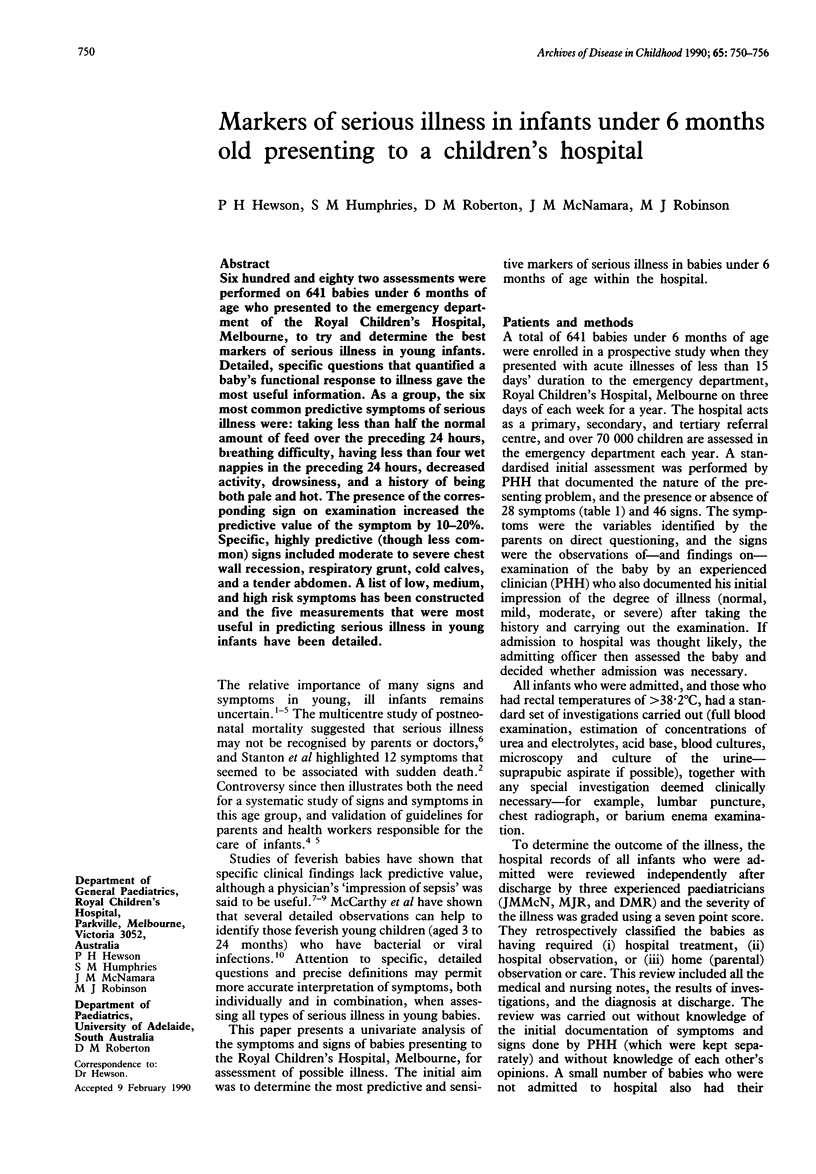
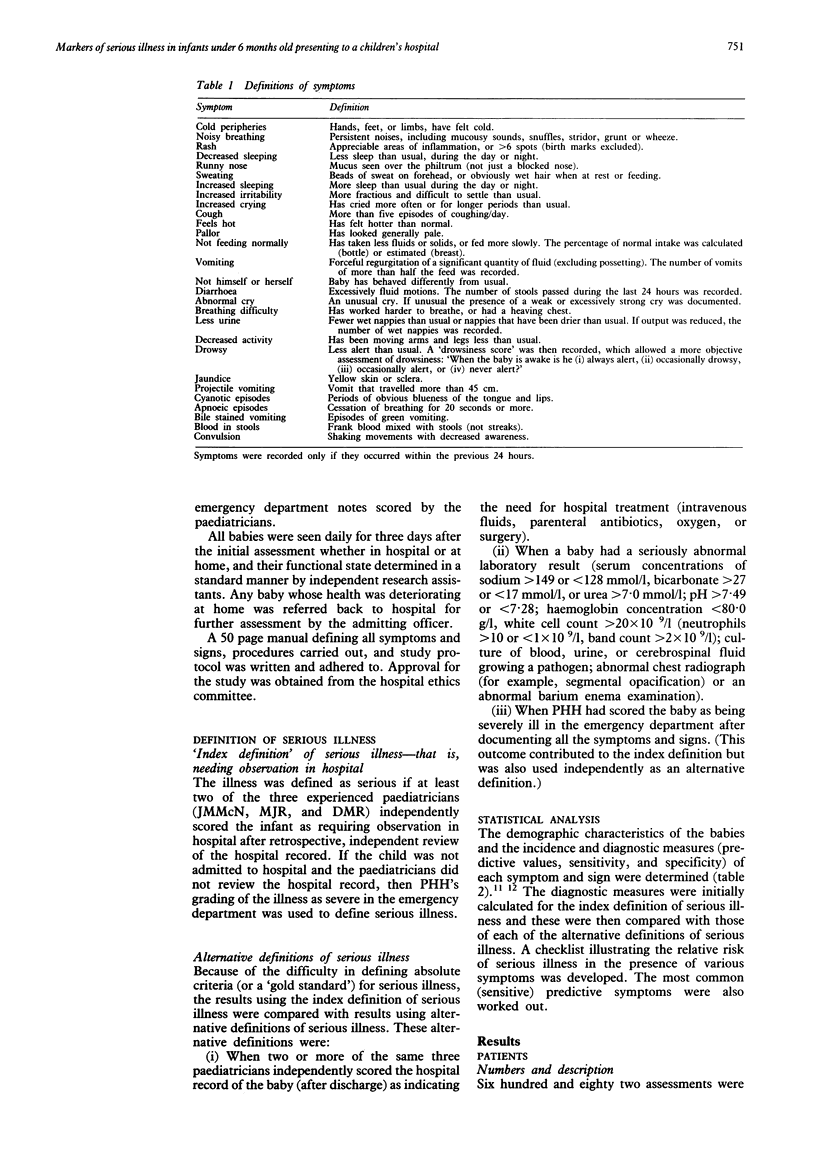
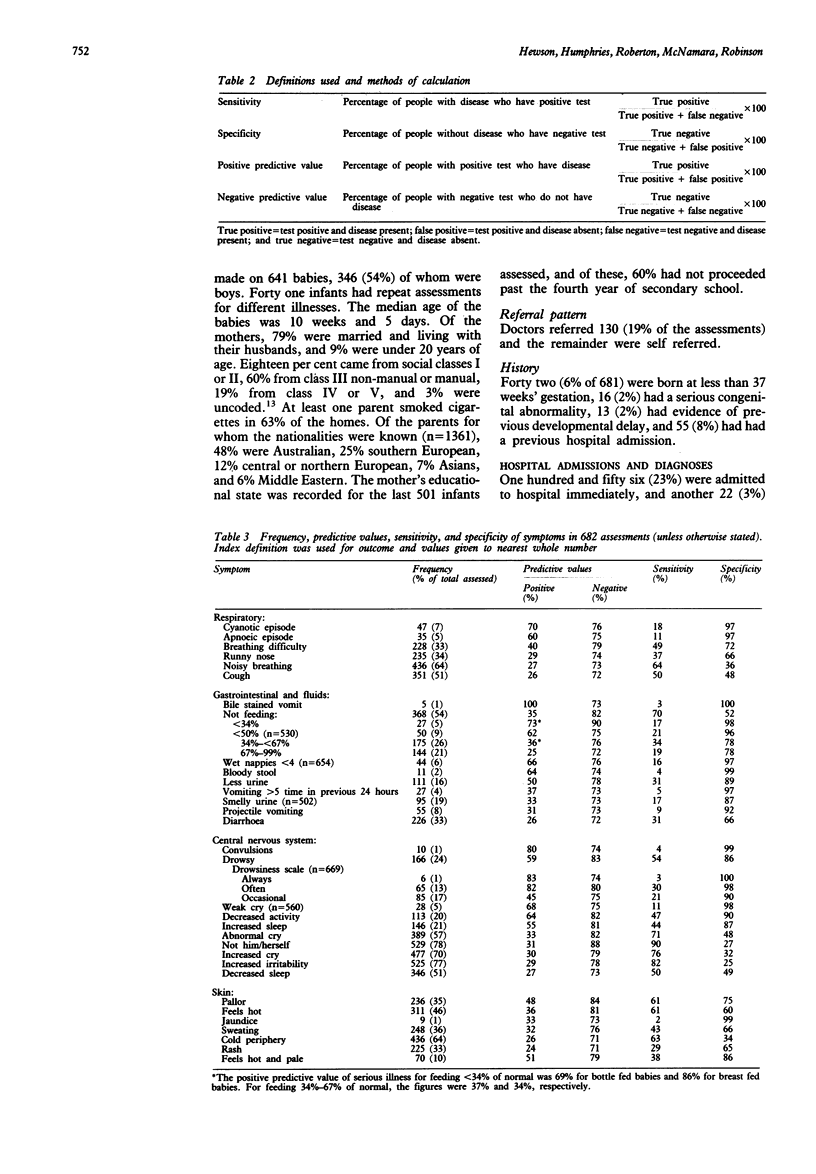
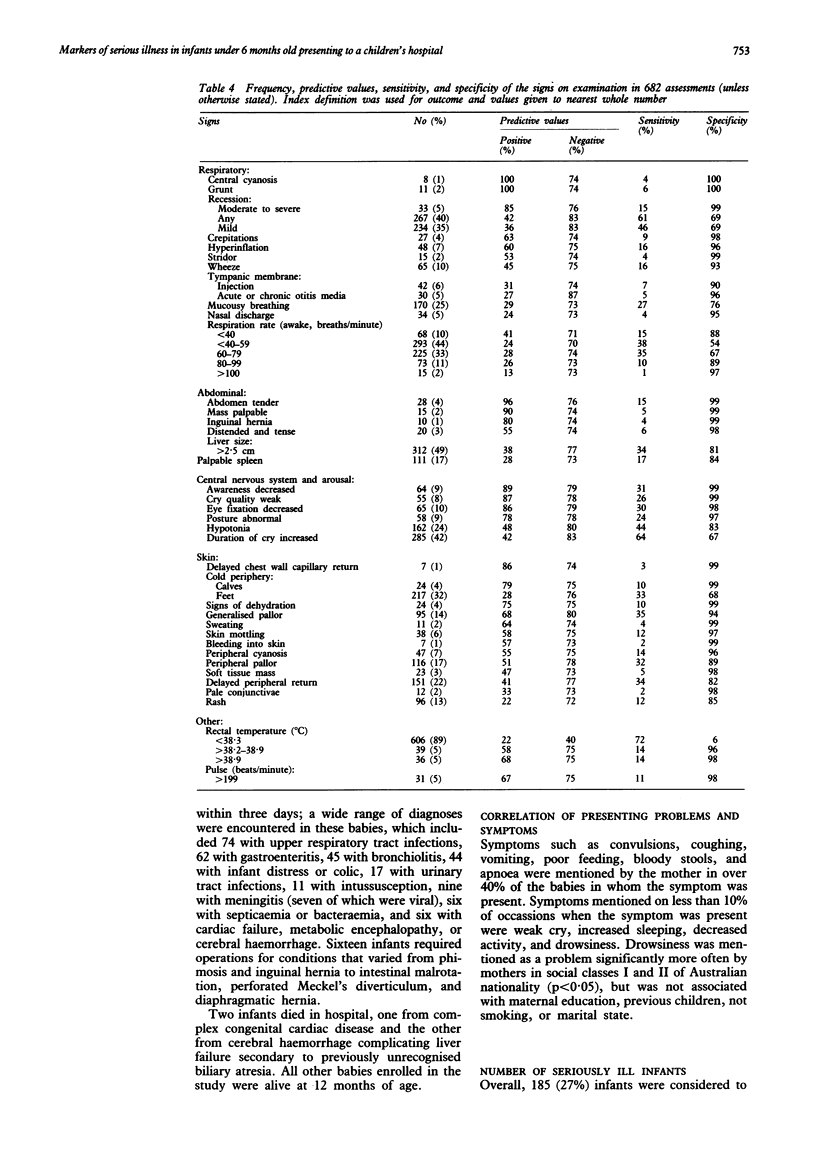

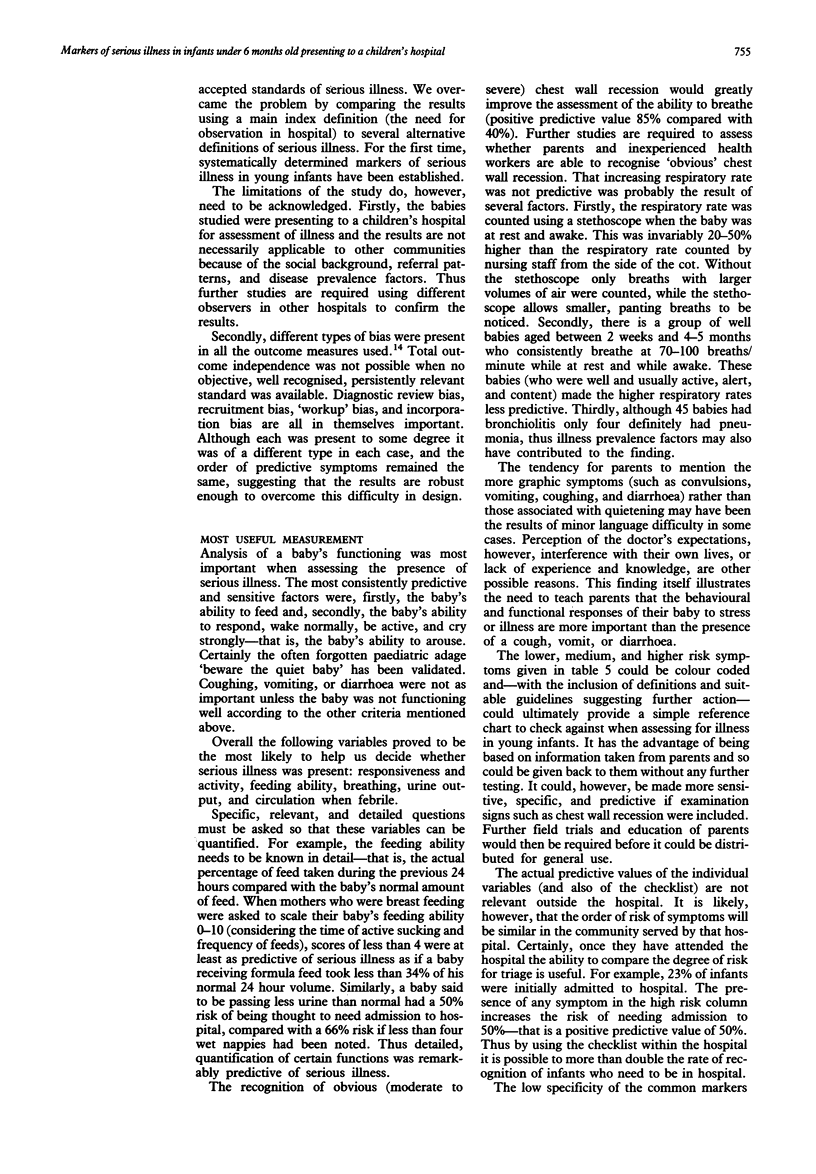
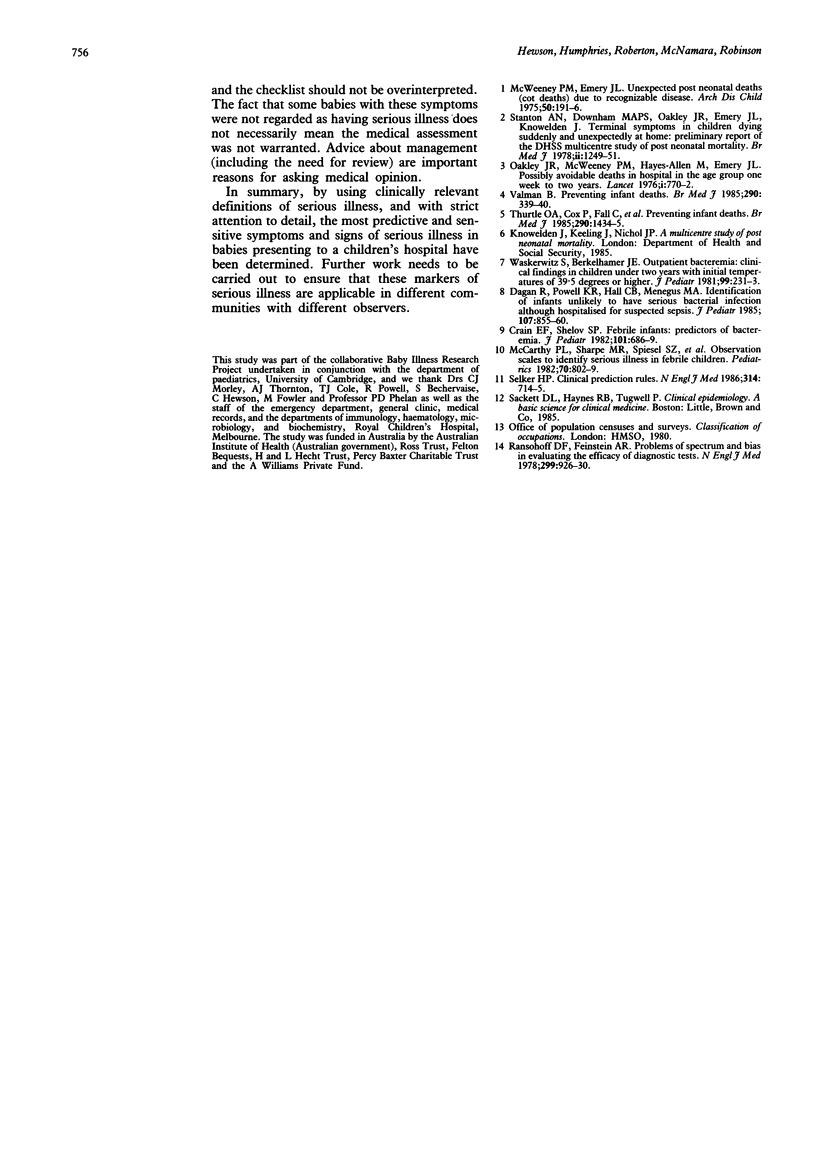
Selected References
These references are in PubMed. This may not be the complete list of references from this article.
- Clinical prediction rules. N Engl J Med. 1986 Mar 13;314(11):714–715. doi: 10.1056/NEJM198603133141113. [DOI] [PubMed] [Google Scholar]
- Crain E. F., Shelov S. P. Febrile infants: predictors of bacteremia. J Pediatr. 1982 Nov;101(5):686–689. doi: 10.1016/s0022-3476(82)80291-6. [DOI] [PubMed] [Google Scholar]
- Dagan R., Powell K. R., Hall C. B., Menegus M. A. Identification of infants unlikely to have serious bacterial infection although hospitalized for suspected sepsis. J Pediatr. 1985 Dec;107(6):855–860. doi: 10.1016/s0022-3476(85)80175-x. [DOI] [PubMed] [Google Scholar]
- McCarthy P. L., Sharpe M. R., Spiesel S. Z., Dolan T. F., Forsyth B. W., DeWitt T. G., Fink H. D., Baron M. A., Cicchetti D. V. Observation scales to identify serious illness in febrile children. Pediatrics. 1982 Nov;70(5):802–809. [PubMed] [Google Scholar]
- McWeeny P. M., Emery J. L. Unexpected postneonatal deaths (cot deaths) due to recognizable disease. Arch Dis Child. 1975 Mar;50(3):191–196. doi: 10.1136/adc.50.3.191. [DOI] [PMC free article] [PubMed] [Google Scholar]
- Oakley J. R., McWeeny P. M., Hayes-Allen M., Emery J. L. Possibly avoidable deaths in hospital in the age-group one week to two years. Lancet. 1976 Apr 10;1(7963):770–772. doi: 10.1016/s0140-6736(76)91610-x. [DOI] [PubMed] [Google Scholar]
- Ransohoff D. F., Feinstein A. R. Problems of spectrum and bias in evaluating the efficacy of diagnostic tests. N Engl J Med. 1978 Oct 26;299(17):926–930. doi: 10.1056/NEJM197810262991705. [DOI] [PubMed] [Google Scholar]
- Stanton A. N., Downham M. A., Oakley J. R., Emery J. L., Knowelden J. Terminal symptoms in children dying suddenly and unexpectedly at home. Preliminary report of the DHSS multicentre study of postneonatal mortality. Br Med J. 1978 Nov 4;2(6147):1249–1251. doi: 10.1136/bmj.2.6147.1249. [DOI] [PMC free article] [PubMed] [Google Scholar]
- Thurtle O. A., Cox P., Fall C., Hufton B. R., Litchfield J., Tomlinson M., Litchfield J., Tomlinson M., Kinmonth A. L. Preventing infant deaths. Br Med J (Clin Res Ed) 1985 May 11;290(6479):1434–1435. doi: 10.1136/bmj.290.6479.1434-c. [DOI] [PMC free article] [PubMed] [Google Scholar]
- Valman B. Preventing infant deaths. Br Med J (Clin Res Ed) 1985 Feb 2;290(6465):339–340. doi: 10.1136/bmj.290.6465.339. [DOI] [PMC free article] [PubMed] [Google Scholar]
- Waskerwitz S., Berkelhamer J. E. Outpatient bacteremia: clinical findings in children under two years with initial temperatures of 39.5 degrees C or higher. J Pediatr. 1981 Aug;99(2):231–233. doi: 10.1016/s0022-3476(81)80458-1. [DOI] [PubMed] [Google Scholar]


